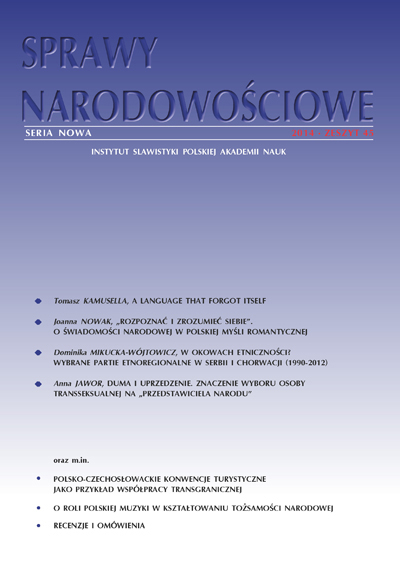Polsko-czechosłowackie konwencje turystyczne jako przykład współpracy transgranicznej
Polish-Czechoslovak tourist conventions as an example of transfrontier cooperation
Author(s): Łukasz Lewkowicz Subject(s): Social Sciences, Sociology
Published by: Instytut Slawistyki Polskiej Akademii Nauk
Keywords: tourist conventions; tourism; borderland; transfrontier cooperation
Summary/Abstract: The article provides a general description of Polish-Czechoslovak tourist conventions from inter- and post-war periods. It presents the conditions of signing of these unique international agreements, the decision-making process, as well as the basic principles of the conventions. Overall, the tourist conventions are special kinds mostly bilateral international agreements aimed at simplifying the rules of transfrontier traffic within a region attractive to tourists, such as the Carpathian and Sudetic borderlands. Poland and Czechoslovakia were the precursors of this kind of transfrontier cooperation across Europe. The first tourist convention was signed in 1925 as a direct result of so-called Cracow Protocols, which aimed at regulating economic, communication and tourist issues with Czechoslovakia after the Jaworzyna Spiska conflict. The next tourist agreement of 1955 was adopted as a result of the post-Stalinist Thaw, which allowed a certain liberalization of the border regime between the two countries. The agreement was amended and extended in 1961-1962, and was in force till the early 1980s. The experiences of the functioning of the tourist conventions became a model for Euroregions which stared to emerge in the area under discussion. Moreover, they also served as a model for central authorities in liberalizing the border regime in the 1990s.
Journal: Sprawy Narodowościowe
- Issue Year: 2014
- Issue No: 45
- Page Range: 125-136
- Page Count: 12
- Language: Polish

